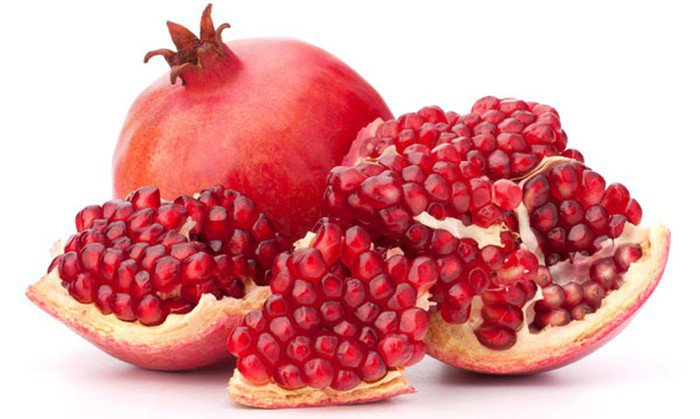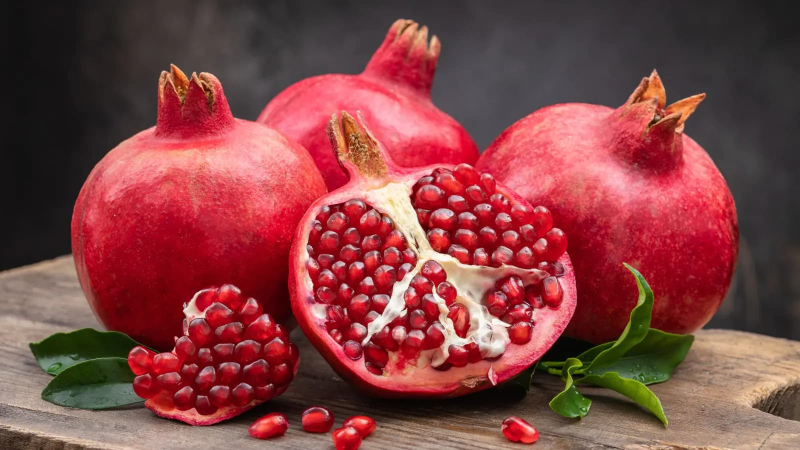Pomegranate
The pomegranate (Punica granatum) is a fruit-bearing deciduous shrub in the family Lythraceae, subfamily Punicoideae. The pomegranate was originally described throughout the Mediterranean region. It was introduced into Spanish America in the late 16th century and into California by Spanish settlers in 1769. The Middle East and Caucasus region, north and tropical Africa, Iran, Armenia, the Indian subcontinent, Central Asia, the drier regions of Southeast Asia, and the Mediterranean Basin are all home to extensive pomegranate cultivation.
The pomegranate is a 5 to 10-m tall shrub or small tree with many spiny branches. It has a long lifespan, with some specimens in France living for 200 years. The leaves of P. granatum are 3-7 cm long, 2 cm wide, shiny, narrowly rectangular, and whole. The flowers have three to seven petals, are bright red, and have a diameter of 3 cm. Some unproductive cultivars are bred just for their flowers. The pomegranate fruit husk, which is reddish-purple in color, is made up of two layers: an outer, hard pericarp and an interior, spongy mesocarp (white "albedo"), which makes up the inner wall of the fruit to which the seeds are attached. A pomegranate can contain anything from 200 to 1,400 seeds.












